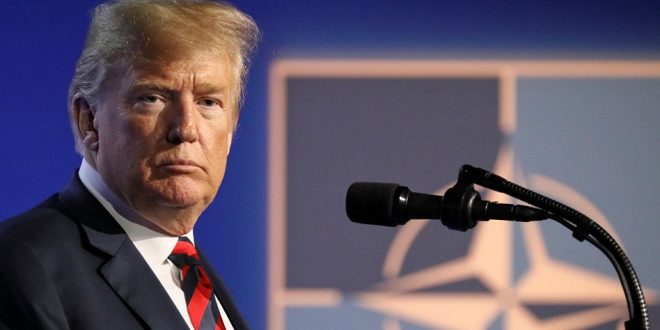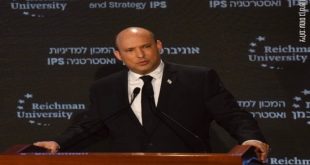Alwaght– While under President Donald Trump the White House views on the North Atlantic Treaty Organization (NATO) policies and ways of administration have been quite controversial for the other member states, the American leader has recently announced that he in a call to the NATO Secretary-General Jens Stoltenberg suggested changing the NATO name to NATOME as there are plans to expend the Western military organization to the Middle East.
Explaining why he chose the new acronym, Trump on Thursday said in a tweet: “I think he was actually excited about it. I actually had a name. NATO, right, and then you have ME, Middle East. They would call it NATOME.”
But his suggestion raises questions. What is behind White House plans for Middle East expansion while Trump’s overall strategy insists on leaving the region and the American military in the region is facing growing risks? What is the outlook for such a policy?
Getting out of Iraq political quagmire
Following the Iraqi parliament’s bill to expel the foreign forces last week, the American officials initiated massive moves to force the Iraqi parliament and nation to walk back from their resolution to expel the American troops from their country. Trump threatened that the US will impose tough economic sanctions on Baghdad, including cutting off access to oil money, if the latter pushes forward with plans to close the American bases. The White House disrespect to the Iraqi decision to move its forces out will redefine the US in the Arab country as an occupying force. This is a great defeat for Washington after 16 years of existence in Iraq and spending billions and giving many casualties there.
Knowing that it cannot force the Iraqi policies and decisions towards a change in the short and middle term, the US is turning head to NATO to circumvent the Iraqi bill. The US wants to keep its forces in Iraq under the cover of being part of an international coalition.
Possible vacuum after “pivot to East”
It has been years now since China’s fast-moving economic and military development and the endeavor to expand influence across the world have set off the alarm bells to the American political elites about Washington falling behind Beijing in a fierce global competition. Since the presidency of Barack Obama, Washington considered “pivot to East” policy which means reducing military presence in West Asia and North Africa. This policy was highlighted by Trump who called for the US to quit the endless wars in West Asia and focus on China, though in practice this policy was not implemented on the ground as the president’s anti-Iranian and pro-Israeli policies fuel the tensions and encourage the US to increase its forces in the region.
However, what renaming NATO can reveal is the US preparing the ground for withdrawal from the region. Considering Iraq presence experience and strong expansion of Islamic resistance discourse in the region, Washington is afraid that leaving the region without any replacement will clear the field for such powers as China, Russia, and Iran to fill the vacuum and widen their influence in a serious threat to the West’s interests. Therefore, Trump thinks about involving NATO in the region’s developments to steer clear of a vacuum.
NATO replacing the US
Yet another goal behind Trump’s suggestion to rename NATO is linked to Trump’s major policy of cutting the American military spending as a NATO member.
During his press conference on Thursday, Trump told the journalists that the US has done a big favor to Europe destroying the so-called ISIS caliphate and killing its leader Abu Bakr al-Baghdadi.
“I think that NATO should be expanded and we should include the Middle East, absolutely,” Trump further told reporters at the White House, adding that other NATO members should pay more. He reminded them that over the past few years he collected $130 billion for NATO but that the US does not want to be “fool” like in the past and spend alone.
Trump believes that the European countries have interests and at the same time threats more than the US in the region. So, NATO should play a more active role in West Asia for the good of Western interests.
Outlook
Trump’s plans to involve NATO in West Asia developments, or better to say expand it eastward, like his other stances on NATO will only add to the military organization’s challenges to save unity and cohesion in the future. Presently, some European powers like France, pointing to the inter-NATO differences, call for European security and military independence from the US.
President Immanuel Macron of France in early November last year called NATO “brain dead.” The different and even conflicting interests of NATO members in West Asia push France and Germany to seek actions independent from NATO for presence in the region. An example is the independent European sea coalition in the UAE, a move displaying the gaps on the two sides of the Atlantic. Another example is European-Turkish differences on Syria in which President Recep Tayyip Erdogan of Turkey repeatedly threatens to open the doors for refugees and terrorists to move to Europe. The European powers in more actions towards independence on NATO and the US promote military cooperation with non-members regional states like Jordan.
Furthermore, it should not be disregarded that the European and American priorities regarding threats facing NATO have become brazenly conflicting. While Europe primarily focuses on Russia as the key threat to NATO then gives some priority to West Asia and terrorism, China takes a center stage in the new American strategy. Therefore, it can be concluded that the new NATO expansion plan does not have a clear outlook as the US still grapples with challenges to implement its Middle East Strategic Alliance (MESA), or Arab NATO.
 WILAYAH NEWS VOICE OF THE GLOBAL AWAKENING
WILAYAH NEWS VOICE OF THE GLOBAL AWAKENING






